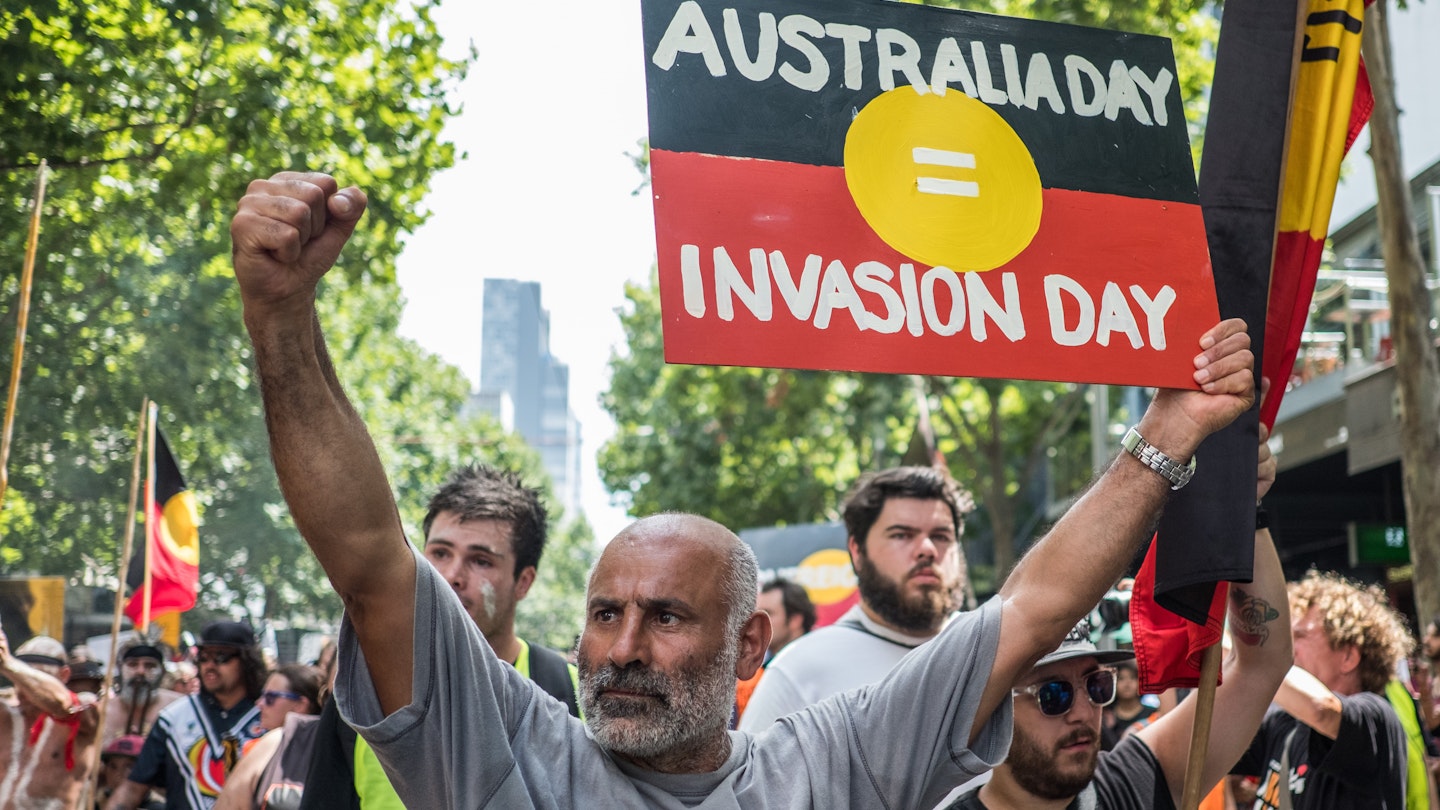Reflections on Australia Day: A Warlpiri Perspective
The story of Australia did not begin on January 26, 232 years ago; rather, it stretches back over 60,000 years and 21 million sunsets.
By the end of this week, I will have experienced twenty-seven January 26s—a date contentiously dubbed Australia Day.
The actual events of that day in 1788, when Governor Arthur Phillip raised the British flag at what is now known as Sydney Cove, symbolize invasion and survival for many First Nations people. Conversely, for others, this anniversary is celebrated as the birth of modern Australia.
Transformation of Collective Memory
My first January 26 was in 1994; coincidentally, this year also marked the first time the Australian Government officially regarded the date as the country’s “national day.” As a Warlpiri woman and Indigenous affairs reporter growing up with Australia Day, I have witnessed a significant transformation in this country’s collective memory.
As a student in the 90s and early 2000s, January 26 was gaining traction in schools as “our” national day. Students were taught about the stars in the Southern Cross, yet they were not informed that this ancient constellation has served as a guide for my ancestors for millennia.
We learned about the ANZACs and performed re-enactments of the First Fleet, but these lessons conveniently omitted stories of Indigenous resistance. The early narratives presented focused on the Crown’s battles, neglecting the conflicts on our own soil. We were informed about Captain James Cook (who was a lieutenant), yet our true diplomats and warriors—Bennelong, Pemulwuy, Barangaroo—were not acknowledged.
Despite the First Fleet’s arrival not occurring on January 26, Sydney has hosted re-enactments and annual “tall ship” regattas to commemorate the day for the past century. In 1938, the city decided to re-enact Phillip’s landing by bringing in Aboriginal men from regional areas who were confined to police barracks and presented as “natives retreating before the might of the British musket.”
On that same day, one of the earliest recorded Aboriginal protests took place, where activists argued that the 150th anniversary of colonization should be marked as “A Day of Mourning” and sought justice through equal citizenship rights.
The Bicentenary and Continued Protests
The bicentenary in 1988 was another significant milestone, marked by celebrations in Sydney alongside the “largest protest since the Vietnam moratorium.” The protests demanded land rights and a retelling of 1788 from a First Nations perspective, reframing the narrative as invasion.
Over the years, January 26 has seen me traveling extensively across Australia. I’ve spent time on my grandfather’s traditional Warlpiri country, in Larrakia country, and on Kulin land in Melbourne, where we witnessed the country’s largest Invasion Day protests in 2018.
Changing Perspectives on January 26
Throughout the past 25 years, January 26 has revealed the worst in some individuals—often used as an occasion to party and ignore the views of those who challenge narrow definitions of Australian identity.
Simultaneously, First Nations people have responded by inviting broader society to learn about our complex and diverse cultures while also holding it accountable for its actions. I have observed non-Indigenous individuals sincerely seeking to understand and build connections.
In recent years, I have spent January 26 on Gadigal land—the territory home to Sydney’s iconic Harbour Bridge and the Opera House.
As a journalist for the national Indigenous broadcaster, my day starts in the quiet moments before dawn. Here, we remember the wars and massacres that devastated our people and lands in the 1800s and beyond.
Later, I engage with protestors advocating for reparations, proudly declaring, “Always Was, Always Will Be Aboriginal Land.” They carry posters representing those who have died at the hands of state violence.
Celebrating Survival and Resilience
I continue to attend Survival Day festivals that celebrate Indigenous cultures, acknowledging their resilience despite oppression. The narratives surrounding January 26 often diverge from the commercialized depictions you might see in mainstream advertising.

As a Warlpiri woman from the central desert, I have developed a complex relationship with January 26 over the years. In my final year of university, I described my feelings as “isolation.” Today, I would likely frame it as “responsibility.”
The comprehensive history of this continent remains unacknowledged by many who identify as Australian. Consequently, calls for a Truth and Justice Commission are growing louder. Many First Nations individuals have long been engaged in this process, sharing the stories of uncelebrated warriors passed down orally by our Elders.
The fundamental truth is that the story of this continent did not commence 232 years ago with January 26, nor when a lieutenant sailed along the coast in 1770; it extends back over 60,000 years and 21 million sunsets. Until our nation reconciles with this history and the trauma it has inflicted, there will be many who refuse to engage in the celebrations associated with Australia Day.
This article was originally published in January 2020 and updated in January 2021.





